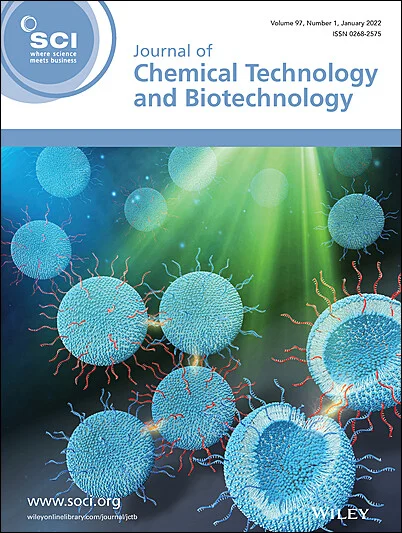求助PDF
{"title":"利用掺硫四氧化三钴增强过硫酸盐活化,快速高效降解阿特拉津","authors":"Shanjun Liu, Shan Sun, Yahui Xu, Jianlin Zhang","doi":"10.1002/jctb.7710","DOIUrl":null,"url":null,"abstract":"<div>\n \n \n <section>\n \n <h3> BACKGROUND</h3>\n \n <p>Atrazine is present in aquatic systems as a pesticide, and poses a serious threat to ecosystems and human health. The advanced oxidation technology based on persulfate is considered a promising approach for removing trace pesticides from water. The synthesis of a persulfate activator for the rapid and efficient degradation of atrazine was studied.</p>\n </section>\n \n <section>\n \n <h3> RESULTS</h3>\n \n <p>A novel rod-like sulfur-doped Co<sub>3</sub>O<sub>4</sub> (S-Co<sub>3</sub>O<sub>4</sub>) was prepared <i>via</i> the hard template method and used as a persulfate activator to degrade atrazine. The removal efficiency of atrazine (10 mM) could be up to 100% in the presence of peroxymonosulfate (1 mM) activated by S-Co<sub>3</sub>O<sub>4</sub> (50 mg L<sup>−1</sup>) within 7 min.</p>\n </section>\n \n <section>\n \n <h3> CONCLUSION</h3>\n \n <p>The nanorod structure of S-Co<sub>3</sub>O<sub>4</sub> is conducive to mass transfer and increases the probability of reaction between substances, and sulfur doping increases the interfacial charge transfer capability. The mechanism of atrazine degradation was mainly attributed to the combined effects of •OH and SO<sub>4</sub><sup>•−</sup>, with the effect of SO<sub>4</sub><sup>•−</sup> being more important. The main degradation pathways of atrazine are dichlorination, hydroxylation and dealkylation, corresponding to the cleavage of Cl1-C9, N5-C10 and N6-C11, respectively. © 2024 Society of Chemical Industry (SCI).</p>\n </section>\n </div>","PeriodicalId":15335,"journal":{"name":"Journal of chemical technology and biotechnology","volume":"99 9","pages":"2080-2087"},"PeriodicalIF":2.8000,"publicationDate":"2024-07-12","publicationTypes":"Journal Article","fieldsOfStudy":null,"isOpenAccess":false,"openAccessPdf":"","citationCount":"0","resultStr":"{\"title\":\"Persulfate activation enhanced by sulfur-doped cobaltous tetroxide for rapid and efficient degradation of atrazine\",\"authors\":\"Shanjun Liu, Shan Sun, Yahui Xu, Jianlin Zhang\",\"doi\":\"10.1002/jctb.7710\",\"DOIUrl\":null,\"url\":null,\"abstract\":\"<div>\\n \\n \\n <section>\\n \\n <h3> BACKGROUND</h3>\\n \\n <p>Atrazine is present in aquatic systems as a pesticide, and poses a serious threat to ecosystems and human health. The advanced oxidation technology based on persulfate is considered a promising approach for removing trace pesticides from water. The synthesis of a persulfate activator for the rapid and efficient degradation of atrazine was studied.</p>\\n </section>\\n \\n <section>\\n \\n <h3> RESULTS</h3>\\n \\n <p>A novel rod-like sulfur-doped Co<sub>3</sub>O<sub>4</sub> (S-Co<sub>3</sub>O<sub>4</sub>) was prepared <i>via</i> the hard template method and used as a persulfate activator to degrade atrazine. The removal efficiency of atrazine (10 mM) could be up to 100% in the presence of peroxymonosulfate (1 mM) activated by S-Co<sub>3</sub>O<sub>4</sub> (50 mg L<sup>−1</sup>) within 7 min.</p>\\n </section>\\n \\n <section>\\n \\n <h3> CONCLUSION</h3>\\n \\n <p>The nanorod structure of S-Co<sub>3</sub>O<sub>4</sub> is conducive to mass transfer and increases the probability of reaction between substances, and sulfur doping increases the interfacial charge transfer capability. The mechanism of atrazine degradation was mainly attributed to the combined effects of •OH and SO<sub>4</sub><sup>•−</sup>, with the effect of SO<sub>4</sub><sup>•−</sup> being more important. The main degradation pathways of atrazine are dichlorination, hydroxylation and dealkylation, corresponding to the cleavage of Cl1-C9, N5-C10 and N6-C11, respectively. © 2024 Society of Chemical Industry (SCI).</p>\\n </section>\\n </div>\",\"PeriodicalId\":15335,\"journal\":{\"name\":\"Journal of chemical technology and biotechnology\",\"volume\":\"99 9\",\"pages\":\"2080-2087\"},\"PeriodicalIF\":2.8000,\"publicationDate\":\"2024-07-12\",\"publicationTypes\":\"Journal Article\",\"fieldsOfStudy\":null,\"isOpenAccess\":false,\"openAccessPdf\":\"\",\"citationCount\":\"0\",\"resultStr\":null,\"platform\":\"Semanticscholar\",\"paperid\":null,\"PeriodicalName\":\"Journal of chemical technology and biotechnology\",\"FirstCategoryId\":\"5\",\"ListUrlMain\":\"https://onlinelibrary.wiley.com/doi/10.1002/jctb.7710\",\"RegionNum\":4,\"RegionCategory\":\"生物学\",\"ArticlePicture\":[],\"TitleCN\":null,\"AbstractTextCN\":null,\"PMCID\":null,\"EPubDate\":\"\",\"PubModel\":\"\",\"JCR\":\"Q3\",\"JCRName\":\"BIOTECHNOLOGY & APPLIED MICROBIOLOGY\",\"Score\":null,\"Total\":0}","platform":"Semanticscholar","paperid":null,"PeriodicalName":"Journal of chemical technology and biotechnology","FirstCategoryId":"5","ListUrlMain":"https://onlinelibrary.wiley.com/doi/10.1002/jctb.7710","RegionNum":4,"RegionCategory":"生物学","ArticlePicture":[],"TitleCN":null,"AbstractTextCN":null,"PMCID":null,"EPubDate":"","PubModel":"","JCR":"Q3","JCRName":"BIOTECHNOLOGY & APPLIED MICROBIOLOGY","Score":null,"Total":0}
引用次数: 0
引用
批量引用

 求助内容:
求助内容: 应助结果提醒方式:
应助结果提醒方式:


